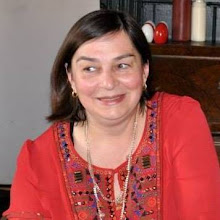This is the question at the heart of Stephen May’s TAG, the novel that was shortlisted for the Wales Book of the Year before going on to win the Media Wales Readers’ Prize as the one most readers thought should have won. How should teacher Jonathan Diamond see his difficult pupil Mistyann, and how should he behave towards her? Politically correct answers become more difficult when he has to travel alone with her to an isolated manor house in North Wales for a special course aimed at helping Talented and Gifted children.
From the start May lets us know things are going to go wrong: we’re just waiting to see how badly he could fall, or if it might all be a comedy of errors. We know Diamond has ended up in disgrace, so we’re with him at every moment hoping that he won’t do anything too drastic, and for a middle-aged man alone with a precocious teenager that’s nerve-wracking. At forty-one, and almost good-looking with some sort of resemblance to Tom Cruise, he’s obviously not of the right generation to be a friend to Mistyann. But he’s a recovering alcoholic who could be stressed into taking a drink and he was also gifted in his youth, a musician who underachieved, so his empathy is with her rather than with the other staff. He’s noncomformist enough to identify more with Mistyann than the system and the rules of behaviour that could protect them both.
The characters are drawn so vividly that readers will remember them as real people they watched through this darkly comic drama. It’s not surprising to find that May is also a playwright, and he has obviously studied teenagers to create Mistyann and the others on the Talented and Gifted residential course. The chapters are written in first person narrative alternately by Diamond and Mistyann, and it’s quite an achievement how May can make us believe it’s a 15-year-old girl talking. She’s no Lolita, as teenagers in this millennium happily call out ‘perv’ or ‘paedo’ at the first sign of any suspect behaviour, and in this book they often do.
While Diamond bungles step-by-step towards the court scene we hear about in the early chapters, we meet more characters drawn with the playwright’s penetrating vision of human behaviour. The American ed-psych guru Ariel La Rock is almost too easy a target, and the couple running manor are beautifully brought to life – the feeble and boyscoutish Ray who has brought back a feisty Asian wife called Susie from extensive travels where he was ‘finding himself’.
It’s not easy to write well about teenagers, and the other students invited on the course are as believable as Mistyann. Clearly chosen for politically correct criteria rather than for purely academic reasons, they include the selection of races and the boy in the wheelchair that might mark them out as the ‘right sort of characters’ for an all-inclusive children’s book these days. As they get to know each other teenage sex is soon on the agenda and, again, May manages to write these scenes incredibly well. Being explicit while still avoiding the pitfalls is a challenge and it takes a brave writer to confront it.
Bringing teenage sex in also raises more discussions, such as why we should consider Mistyann a child but still feel it’s right and normal for the kids to have relationships between themselves. The lovelessness of these relationships is also moving and made me step away from the book to think about our society – and I love it when a book makes me take time aside to meditate on the themes. Another question is about why it feels so troubling that Diamond is at risk of overstepping the boundaries with Mistyann, while somehow it’s just comical if a young female teacher gets involved with a teenage boy.
There’s so much more in TAG: the family Mistyann comes from with the serial relationships of her mother and the way responsibility for looking after the children and cooking has fallen to her. There’s a whole vision of the way we’re expecting teenagers to live today, not to mention the confusion of the adults. May never comments on any of this: he just brings it to life and different readers will draw different conclusions to me, but it will make all readers think.
Is a 15-year-old girl a child? Yes, she is, even though the explicit sex and the risk of pregnancy show she’s old enough to be a mother, and she’s also a better mother than her own one as we can see when she looks after her siblings. Are most men attracted to 15-year-old girls as a group of highly intelligent men in a book discussion group told me recently? Possibly. If so May is brave in revealing this when he does cross that line at times to show us what Diamond finds himself thinking, almost despite his conscious decisions. May pushes the boundaries of what’s acceptable in this novel, in a way that few novelists do when talking about underaged characters. But sometimes you have to push that boundary to raise the discussion of how we should look after these children. The portrayal of how good a teenage mother could be was also welcome.
Saturday, 10 July 2010
Monday, 5 July 2010
The Birth of a Publishing Company 5: The Website Goes Live
It’s a sign of the times that the day a website goes live feels like the day a venture really starts. It seemed particularly apt that my business partner Mike Fortune-Wood contacted me to say the Ward Wood Publishing website was about to appear online just as many of my American friends were celebrating the 4th of July. I’ve just finished the edit of American novelist Sue Guiney’s book A Clash of Innocents and we’ve been planning the launch, so it seemed like a good date to celebrate a British-American collaboration!
It really helps to get some financial support at the outset and we’re grateful to the London School of Journalism who have sponsored the costs of the website. I hope we’ll be able to work with them in more ways in future, and in the meantime take a look at our site on www.wardwoodpublishing.co.uk but bear in mind that the payment options and some pages (anthologies and short stories for example) aren’t live yet.
So much work has gone on privately that it felt exciting to reveal some of it publicly via the website at last. Along with information about Sue Guiney on the Novels page, the Poetry pages are also live with information about Ann Alexander and her collection Too Close, complete with prizewinning poems including the Mslexia one. You can also find out about Mike Horwood, a poet you may not have heard about as he’s been living in Finland for years. His book Midas Touch will be out in November, and Ann’s collection is due for publication in October.
Some of the pages aren’t live yet, so don’t be frustrated by the inactive links. We’ve been busy planning book launches, bookshop signings and reading events with the authors and the Events pages will soon be filling up as we add the details. I’ll save information on the events we have lined up for future blog posts along with information on how to arrange reading tours and launches.
I’m especially pleased with the logo Mike Fortune-Wood has created: he suggested the design intertwining the twin initials from our surnames. I’d like a brooch made with that! The logo was the first idea we worked on for the website and it then took some time to come up with the right colours. With feedback from others we tried to find colours that were easy on the eye and clear to read, bearing in mind the difficulties people can have with some combinations due to colour blindness.
I’ll let the website speak for itself, and as more pages become live our aim is to make it a place where authors can interact by promoting events they arrange as well as the ones we’re planning for them. There will also be links to the authors’ own websites and blogs. The authors stay in regular contact with us at Ward Wood so all of this is working as a collaborative effort, and we’ve used Google Wave to make this possible. Google Wave has been a real asset in helping us to work as a team and to share information in a way that I’ll describe in the next article.
It really helps to get some financial support at the outset and we’re grateful to the London School of Journalism who have sponsored the costs of the website. I hope we’ll be able to work with them in more ways in future, and in the meantime take a look at our site on www.wardwoodpublishing.co.uk but bear in mind that the payment options and some pages (anthologies and short stories for example) aren’t live yet.
So much work has gone on privately that it felt exciting to reveal some of it publicly via the website at last. Along with information about Sue Guiney on the Novels page, the Poetry pages are also live with information about Ann Alexander and her collection Too Close, complete with prizewinning poems including the Mslexia one. You can also find out about Mike Horwood, a poet you may not have heard about as he’s been living in Finland for years. His book Midas Touch will be out in November, and Ann’s collection is due for publication in October.
Some of the pages aren’t live yet, so don’t be frustrated by the inactive links. We’ve been busy planning book launches, bookshop signings and reading events with the authors and the Events pages will soon be filling up as we add the details. I’ll save information on the events we have lined up for future blog posts along with information on how to arrange reading tours and launches.
I’m especially pleased with the logo Mike Fortune-Wood has created: he suggested the design intertwining the twin initials from our surnames. I’d like a brooch made with that! The logo was the first idea we worked on for the website and it then took some time to come up with the right colours. With feedback from others we tried to find colours that were easy on the eye and clear to read, bearing in mind the difficulties people can have with some combinations due to colour blindness.
I’ll let the website speak for itself, and as more pages become live our aim is to make it a place where authors can interact by promoting events they arrange as well as the ones we’re planning for them. There will also be links to the authors’ own websites and blogs. The authors stay in regular contact with us at Ward Wood so all of this is working as a collaborative effort, and we’ve used Google Wave to make this possible. Google Wave has been a real asset in helping us to work as a team and to share information in a way that I’ll describe in the next article.
Subscribe to:
Comments (Atom)






